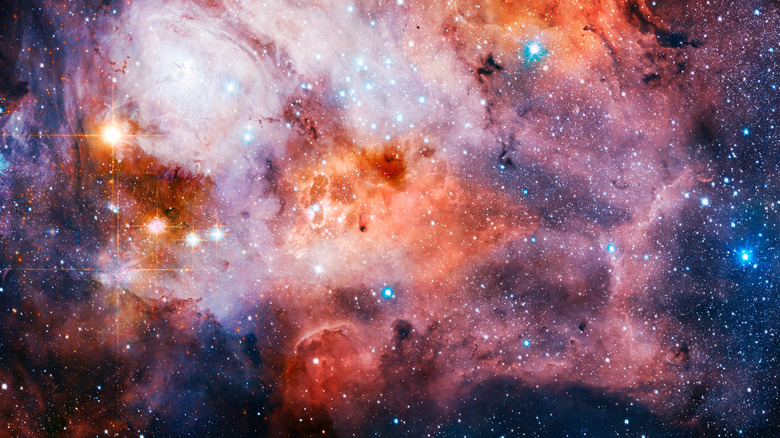Does Earth Have Extra Hidden Moons?
For over five decades, scientists and astronomers have debated the possibility that Earth's moon is not the only natural satellite orbiting our planet. According to The Weather Channel, Polish scientist Kazimierz Kordylewski observed what was later named Kordylewski Dust Clouds (KDCs), pockets of nearly microscopic dust orbiting Earth at around the same distance as our moon. In the decades since, astronomers have doubted the existence of KDCs, as they are difficult to measure or simulate. Now, a team of Hungarian scientists has confirmed that two KDCs are orbiting the Earth in deep space, bringing our moon count from one to three.
These moons are quite unlike the lunar body seen bright in the night sky. They are made up of dust particles that are less than a millimeter long and don't reflect light well, making them hard to detect even with sophisticated equipment. The Hungarian scientists were able to identify the KDCs by using polarized camera filters to study the light scattered by dust and confirm two wide dust clouds that orbit the Earth.
While nearly invisible, the dust clouds are massive
According to India Today, while the dust particles that make up the KDCs are nearly microscopic in size, the dust clouds themselves cover a huge expanse of the night sky. The newly confirmed moons span an area the size of 30 by 20 lunar discs, or 65,000 miles by 45,000 miles. That is a width nearly nine times that of planet Earth. Despite their immense size and close proximity to Earth, the light they give off is so dim that researchers had a hard time making them out from the neighboring sources of light, including the distant stars that cover the night sky.
While the clouds themselves are ancient and have been orbiting our planet for millions of years, the individual particles change frequently. Dust gets pulled in from comets and meteors — some come from planets, and some come from the various bodies that wander the night sky. When particles from the KDCs get pulled in by the gravitational forces from the Earth, moon, or sun, new particles replace them, and the cycle continues. While KDCs are far from moons in the traditional sense, they are fascinating phenomena that have been following the planet for millions of years — all in complete secrecy.

